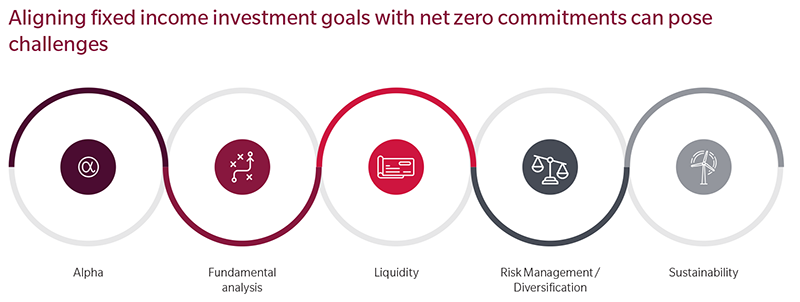2022 was a difficult year for some UK pension schemes, with the LDI liquidity crisis causing many trustees to scramble for liquidity to meet margin calls. However, on the brighter side, rising gilt yields have generally improved funding levels despite lower asset values across equity and fixed income. The result is that schemes need fewer assets to meet the significantly lower level of liabilities, allowing them to further reduce risk in their portfolios.
Key takeaways for schemes in regard to the LDI crisis include paying attention to liquidity and reviewing asset allocations.1 Looking ahead, we see two major questions for trustees, sponsors and their advisors:
- Given the improved funding position, what will future asset allocations look like?
- How do UK regulatory requirements to address climate risks and reach net zero factor into portfolios?
While the answers will depend on the desired endgame for schemes — insurance-based solutions or self-sufficiency — we believe there are some shared goals, such as de-risking while meeting net zero objectives.
In our view, this means UK institutional asset allocations may shift towards increased proportions of fixed income, lower illiquidity and a greater focus on sustainability.
Impact of improved funding levels on asset allocation
Schemes using leveraged LDI faced severe issues during the crisis due to the short, sharp rises in gilt yields. Despite this story making national and international headlines, what is overlooked is that, overall, schemes are in an improved funding position due to the rise in yields.
Longer term, these reduced liabilities will require a smaller pool of assets to pay out benefits as they come due. What might improved funding levels and the ability to hedge interest rate risk at better levels today mean for asset allocations going forward?
We now see schemes getting closer to the buy in or buy out stage and in a better position to reach self-sufficiency. In the case of an insurer-based solution, this means schemes and sponsors should start positioning portfolios to be attractive to insurers, which we view as containing higher fixed income allocations and lower private asset exposure.
Now is a good time for schemes and their advisors to reset and consider what this future state could be. As the industry reflects on the LDI crisis, schemes may wish to assess whether they had the right liquidity risk management and liquidity asset pool, and how much risk to take as the funding backdrop improves.
Meeting climate regulations while managing portfolios
Whilst asset allocation decisions appear relatively straightforward, how can schemes factor the UK’s net zero ambitions into their de-risking plans? Does net zero pose a challenge to building a portfolio that is attractive to insurers who also have net zero objectives?
In our view, strategies like, ‘buy and maintain credit’ will become ever more appealing from a de-risking perspective; however, aligning fixed income investment goals with net zero commitments can pose challenges due to balancing conflicting priorities. Careful consideration will be required to find the right balance of risk, return, liquidity and sustainability.

